How To Add Charts And Graphs To WordPress
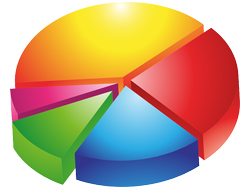
You’ve heard the saying “a picture is worth a thousand words.” This is certainly true when you are presenting or explaining complex data.
Using graphs and charts is great for making statistical data simpler and easier to understand.
You can use tables to present information, but if you want your audience to try and interpret complex information with figures, trends and comparisons more easily, then charts and graphs are perfect for helping them visualize your data.

Graphs and charts help explain complex information so people can more easily interpret it!
If you want to present information visually and dynamically on your WordPress site like graphs and charts, this tutorial will show you exactly how to create great-looking and updatable graphs and charts to your WP pages that:
- Your visitors can engage with
- Allows you to add chart or graph data from your computer or an online source of data
- Will resize dynamically for mobile screens
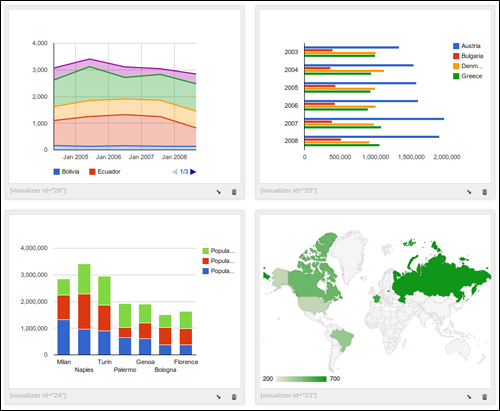
![]()
If you are displaying visual data like bar charts, comparison data or trending graphs which contain information that is not going to change (e.g. historical data), an easier option is to create your graphs or charts using an image editing application, convert these into images and then simply insert the images into your content.
Use WordPress Chart & Graph Plugins
If you want to create interactive bar charts and pie graphs in WordPress posts with no coding skills required, the easiest way to do this is to use a plugin.
Fortunately, there is a great plugin for WordPress users that is simple to install, easy-to-use and allows you to not only create colorful and mobile-responsive graphs and charts, it also lets you populate your charts and graphs with dynamic data.
WordPress Plugin: Visualizer

Visualizer Plugin URL
You can install the plugin inside your WP dashboard (see a little further down the page), or download the Visualizer plugin from the link below:
http://wordpress.org/plugins/visualizer
Visualizer Description
The WP Visualizer plugin is a simple, easy to use and powerful tool that allows you to create, manage and insert eye-catching and interactive graphs and charts into your WordPress posts and pages with a few mouse clicks.
WordPress Visualizer uses Google Visualization API to render charts, which support cross-browser compatibility (adopting VML for older IE versions) and cross-platform portability to iOS and new Android releases, and are based on pure HTML5/SVG technology (adopting VML for old IE versions), so no additional plugins are required.
WordPress Visualizer also provides a variety of charts that are optimized to address your data visualization needs, including:
- Line chart
- Area chart
- Bar chart
- Column chart
- Pie chart
- Geo chart
- Gauge chart
- Candlestick chart
- Scatter chart
Visualizer is flexible and customizable, allowing you to use Google Chart Tools with their default setting, or configure an extensive set of options to match your web design. Several options are available for each chart that let you customize their settings.
Additionally, charts are rendered using HTML5/SVG technology to provide cross-browser compatibility (including VML for older IE versions) and cross platform portability to iPhones, iPads and Android devices. Your web visitors can see your charts and graphs on their mobile device browsers without having to install any extra software.
Plugin Installation
From your WordPress admin area, select Plugins > Add New from the main menu …
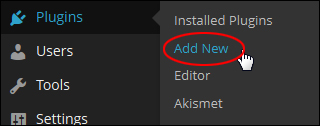
In the Add Plugins screen type in search for “visualizer” and hit enter …
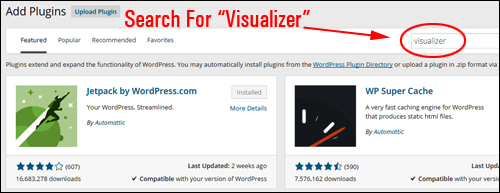
Locate Visualizer in the search results area and click the “Install Now” button …
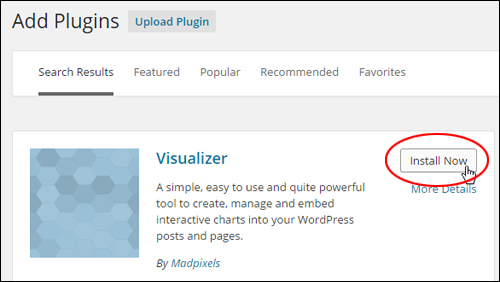
Click OK to go ahead …
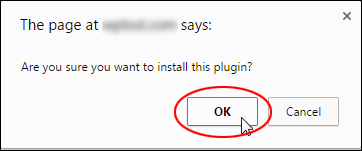
Activate the plugin after successfully installing it …
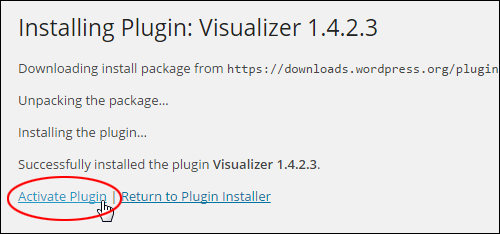
You can also activate the plugin in the Plugins area …

Once the plugin has been activated, click on Library …

You can also get to the plugin’s ‘library’ screen by selecting Media > Visualizer Library in the admin menu …
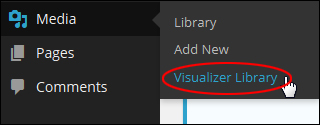
This brings up the plugin’s Visualizer Library section …
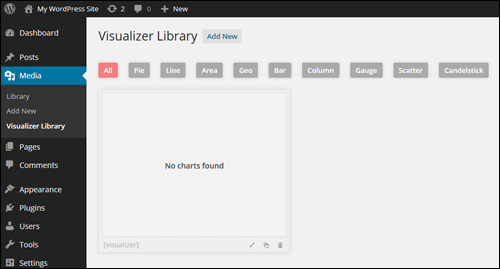
When you first install the plugin, this section will be empty.
The next step is to add add charts and graphs to your library.
How To Configure The Plugin
To add a graph or chart to the library, click on the ‘Add New’ button …
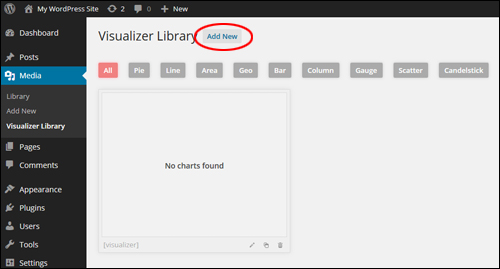
A visual gallery displaying all of the different kinds of charts and graphs available will load on your screen.
Select the graph or chart type you would like to create and click on the ‘Next’ button …
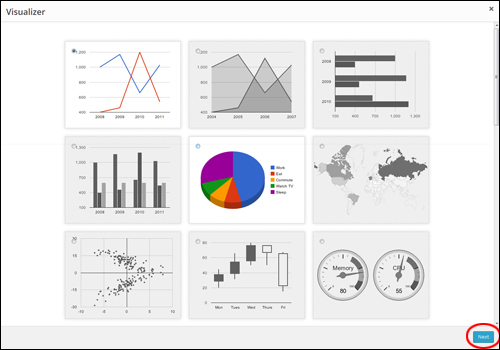
The graph/chart type will open up in a lightbox.
The next step is to upload a CSV file with the data you want to populate your chart or graph with …
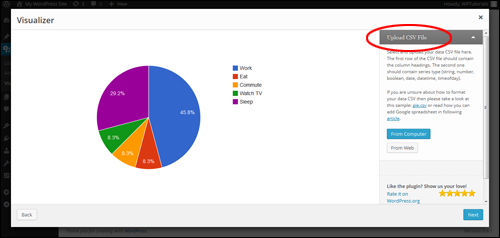
![]()
When creating your CSV data file, make sure that:
- The first row includes your column headings.
- The second row includes the series type (e.g. boolean, date, etc.)
The screenshot below shows how to format your data as required …
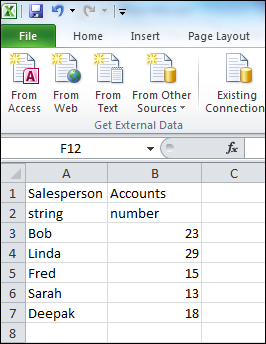
If you are unsure about how to format your CSV file, just refer to the sample file that comes with the plugin.
Next, select the data source (‘From Computer’ or ‘From Web’) in the ‘Upload CSV File’ section.
Upload CSV File From Computer
To upload your CSV file from your computer select ‘From Computer‘ …
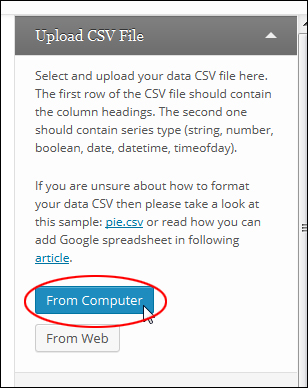
Locate and select your data file and click on ‘Open‘ …
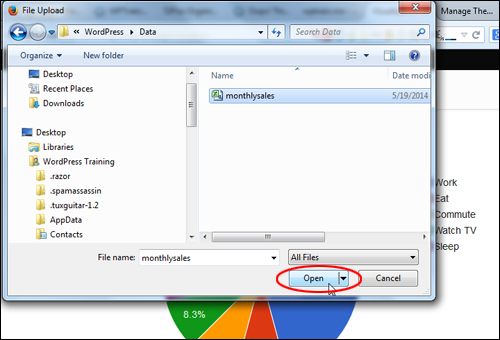
The plugin will now import the data from the CSV file and display it using the graph/chart type you have previously selected …
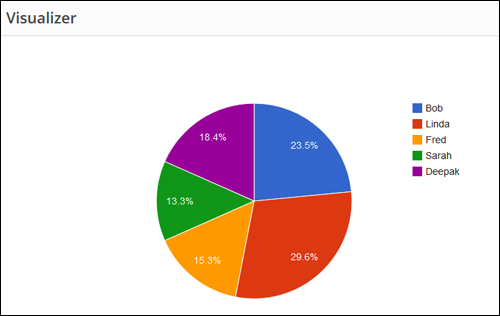
Upload CSV File From The Web
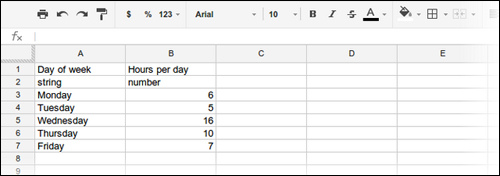
![]()
For a step-by-step tutorial that shows you how to create, save and publish data to a Visualizer chart or graph using Google Spreadsheet, see the article below:
After importing your data, make sure that all of the information is correct (if not, click on the ‘Back’ button and reupload a data file containing the right data), and then click ‘Next‘ …
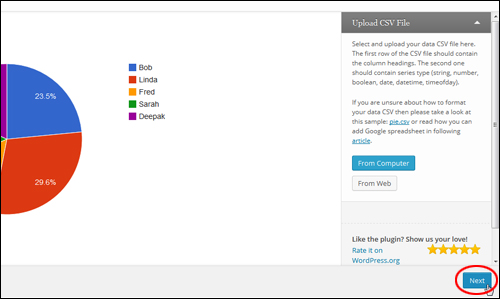
Depending on the chart or graph type you have selected, the plugin displays a range of customization options and settings …
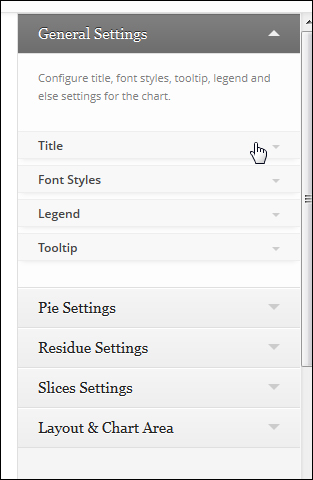
Visualizer gives you total control of your information, and updates your display in real time …

For example, the pie chart offers various configurable options, including:
- General Settings – Configure settings for the chart’s title, font styles, tooltip, and legend.
- Pie Settings – Create 3D pie charts, draw slices counterclockwise, set the text content displayed on the slice, create a “donut” pie chart, rotate the chart’s “start” angle and set the slice border color.
- Residue Settings – Set the ‘Visibility Threshold’ (the slice relative part, below which a slice will not show individually.), ‘Residual Slice Label’ (the label for the combination slice that holds all slices below slice visibility threshold, e.g. “Other”), and ‘Residue Slice Color’.
- Slice Settings – Customize the ‘Slice Offset’ (how far to separate the slice from the rest of the pie), and ‘Slice Color’.
- Layout & Chart Area – Configure the layout (total size of chart) including the width and height of the chart as a number of percentage, background color for the main area of the chart and the chart border width and color, and the placement and size of the chart area (where the chart itself is drawn, excluding axis and legends).
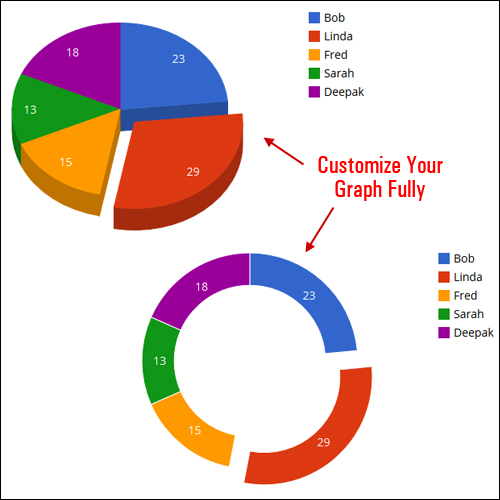
Once you are satisfied with the way your chart or graph appears, click on the ‘Create Chart’ button …

Your graph or chart will be added to the Visualizer ‘Library’ …
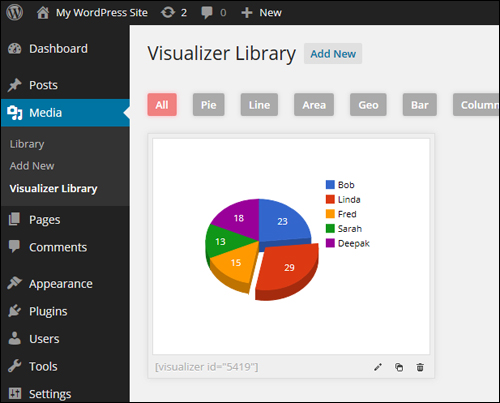
Note that new elements are given a unique ID displayed in a shortcode. As you will see shortly, this lets you embed charts and graphs into your posts and pages quickly and easily …
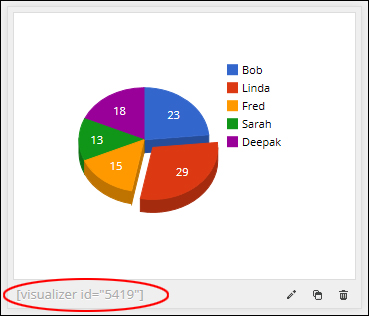
Charts and graphs added to the Visualizer Library can be accessed by type …
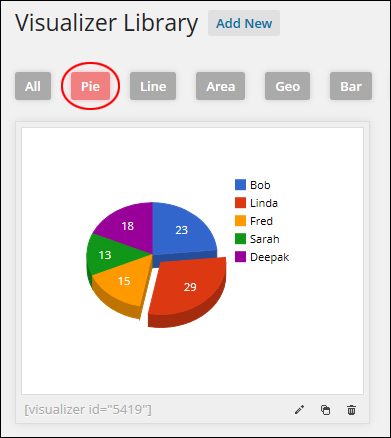
After a new element has been added to the ‘Visualizer Library’, you can edit its details, duplicate it, or trash it …
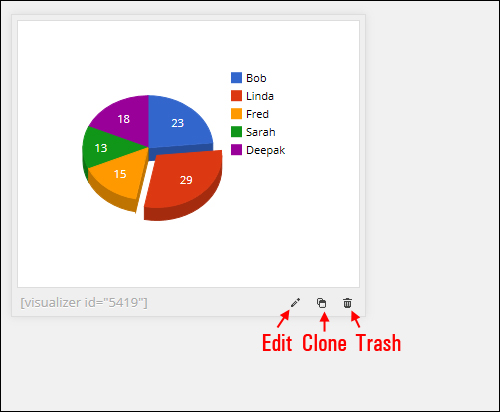
Plugin Usage
Once you’ve created a new chart or graph and added it to the Library, it’s very easy to add it to your pages or posts.
First, create a new post or page (or open an existing one) …
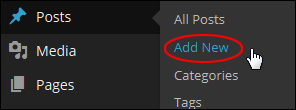
Next, place your mouse cursor where you want to insert your visual element into the content and click on the ‘Add Media‘ button …
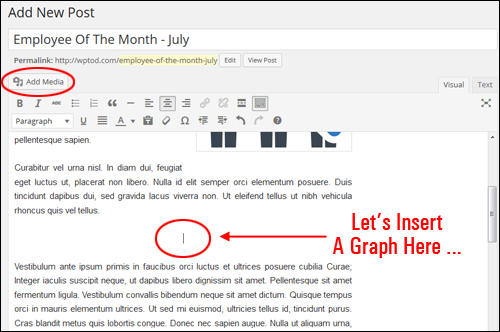
Click on ‘Visualizations‘ …
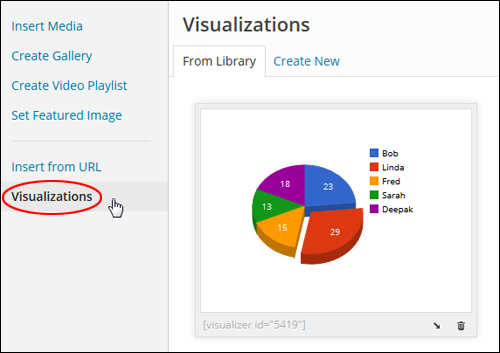
Find the graph or chart to be added to your content and click on the “insert” icon …
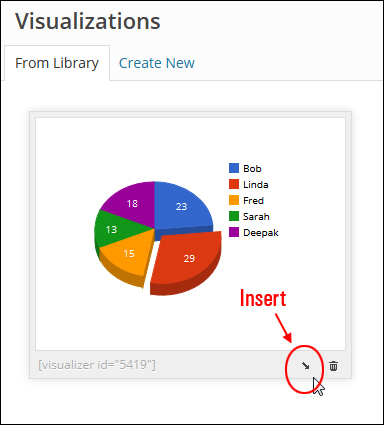
This adds a shortcode for the element into your content …
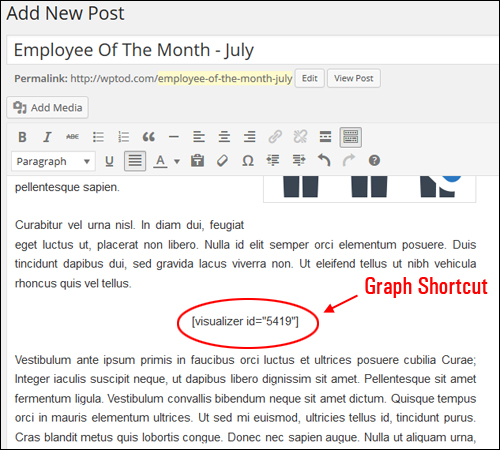
After you have added your shortcode, click on Publish to publish (or update) your post or page …
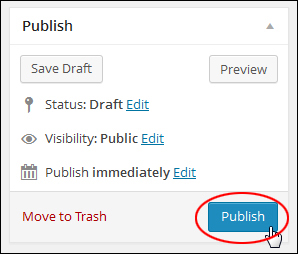
After your page has been published, click ‘View post’ to see it …
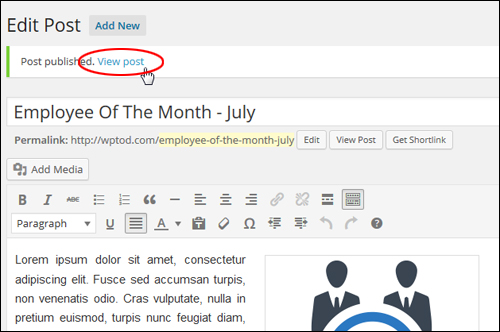
Your page or post should display the element in the location where you placed the shortcode …
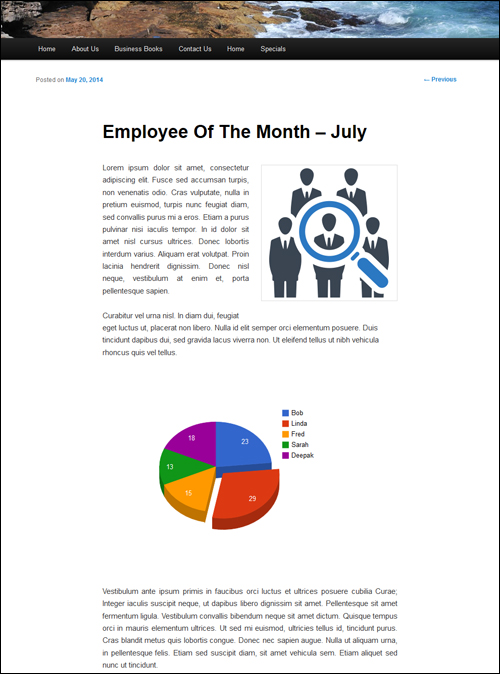
As mentioned earlier, Visualizer also displays responsive charts for mobile device browsing …
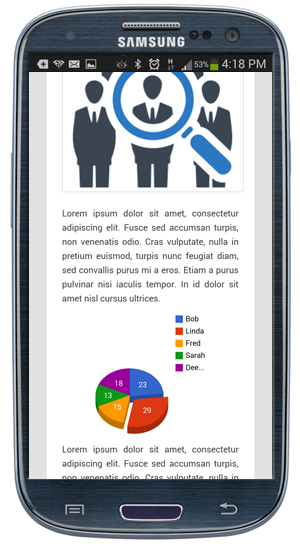
As you can see, the Visualizer plugin allows you to add and customize dynamic charts and graphs in your content. You can change your data and the changes will automatically be reflected wherever you have inserted your charts, graphs, comparison bars , etc. in your site. This makes working with dynamic chart information in WordPress very easy.
![]()
The developers of this plugin have created a number of tutorials you can use to learn how to edit, customize and use WordPress Visualizer.
For additional tutorials on editing, copying, deleting and adding data to your charts, visit the site below:
Congratulations! Now you know how to create great-looking and dynamic charts and graphs in WordPress.
***
"This is an awesome training series. I have a pretty good understanding of WordPress already, but this is helping me to move somewhere from intermediate to advanced user!" - Kim Lednum
***